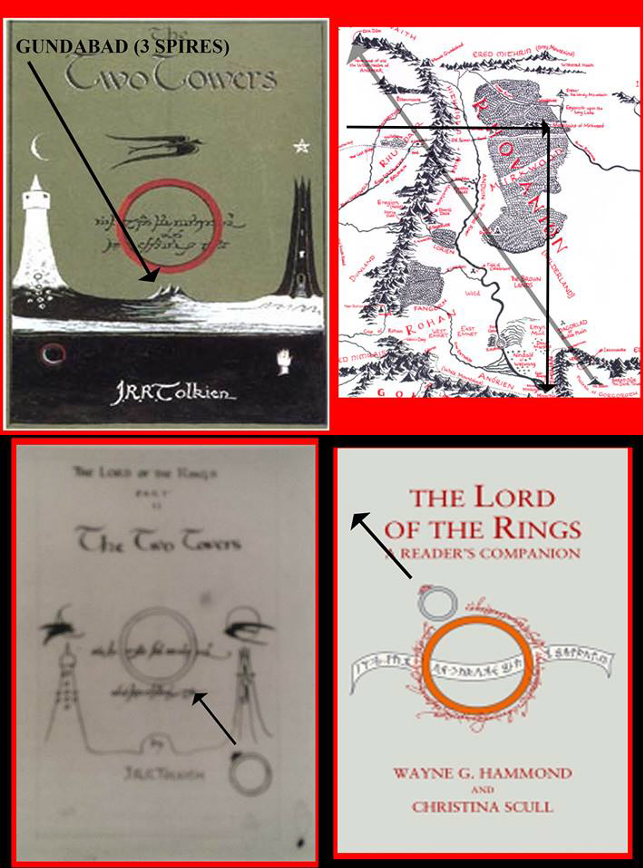Tolkien Prediction #7. When developing my theory about True Stone I had a hunch that a straight line could be drawn from Orodruin through the Morannon Gate to Carn-Dûm at the far northern spur of the Misty Mountains. The straight line connects those 3 points.
Tolkien drew a number of drafts for the cover of The Lord of the Rings. There are some strange and unexplained symbols and arrangements. For example why is the Ring Narya (Ring of Fire) in the image (at all) and why is it pointing N-W in both versions? It belonged to Gandalf, but it’s barely mentioned and it is pointing N-W in both versions. What is the ribbon bearing the inscription? What relevance does that have at all? Ribbon has its etymological roots in band from ‘ribband’ but the connections between a ring and a ribbon is not immediately obvious. Why is there a key on Orthanc and a kabbalah Tree of life arrangement of holes on the tower of Minas Ithil?
In the new year I made some really interesting discoveries which were, to me, the most surprising yet. In rewriting some material I realized that there was a more fundamental theme at work in the Lord of the Rings than I realized and it involved the map in a very literal way. It finally helped me to understand the ‘Two Towers’ which, as Minas Ithil and Orthanc, had always puzzled me. It didn’t make sense to me at all that Tolkien stated that the two towers were Minas Ithil and Orthanc. Why not Barad-Dûr and Minas Tirith? Or Barad-Dûr and Orthanc? They both had palantír stones but the one from Minas Ithil had been removed a thousand years before the time of the Lord of the Rings.
What I discovered answered all of these questions since they are all connected and it opened up a real can of worms!

I also think that the strange use of the tape ribbon is a reference to the ScrewTape Letters of his life-long friend C.S Lewis. Tolkien has incorporated a systemmatic mode of movement between rational planes in The Lord of the Rings involving two antagonistic spirals which are symbolized by Tolkien’s extensive use of the numbers 6 and 9. Clues to this can be found (among many places) in his idiosyncratic use of the word ‘screw’ in the text. My theory seeks to explain many of the so called ‘idiosyncracies’ of his literary style.